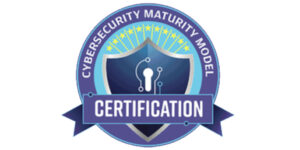In this day and age of constantly growing online threats, one thing has become clear: hackers have never had less time to do their damage. Within 12 days of a vulnerability’s discovery, hackers usually exploit it. This means that standard ways of scanning for vulnerabilities are now a thing of the past. The way cybersecurity is done is changing a lot, and I’ll explain why vulnerability scans can’t just be done once every month or every three months like they used to be.
The Fast Pace of Cyber Threats
Periodic scans, which were usually done every three months, were once the norm for companies. These scans gave a picture of an organization’s weaknesses at a certain point in time. They included both obvious threats like SQL injections and XSS and less obvious ones like weak password protections and misconfigurations. However, these regular checks are completely inadequate because of how constantly changing online threats are right now. In order to give you an idea, a new Common Vulnerabilities and Exposures (CVE) report is made every 20 minutes. Businesses are pretty much walking through a hazard while wearing blindfolds in between these scans. The fact that 25,000 CVE vulnerabilities were made public last year shows that these are places where threats are waiting to be found.
“Continual Vulnerability Scanning” is a paradigm shift.
For 2024 and beyond, the motto is clear: always look for security holes. But what’s the rush? The reason is easy to see: hackers won’t wait quietly to mark their calendars for your next scan. This continuous method goes beyond the usual checks that are done every so often. Every time you use a computer service or update your software, the area that could be attacked grows. A brief mistake, a small change to the network, or the appearance of a new security hole could put your whole digital system and your business at risk.
Also, in this digital age, the old compliance rules that say you have to do an “annual penetration test” or a “quarterly vulnerability scan” are becoming less and less useful. In the past, these kinds of steps were seen as extras—”nice to have.” They are now the most important part of a business’s internet defense. That’s why it’s crucial to adopt a proactive approach to cybersecurity. By continuously scanning for security holes, you can identify and patch vulnerabilities before hackers can exploit them. In today’s rapidly evolving threat landscape, it’s no longer enough to rely on periodic checks. Implementing a continuous monitoring system allows you to stay one step ahead of cybercriminals and safeguard your digital assets effectively. By prioritizing regular scans and updates, you can ensure the resilience and longevity of your business in an increasingly interconnected world.
How to Do Attack Surface Monitoring Right
The attack surface is changing over time, which is an important part of this continuous scanning paradigm that is often ignored. The attack surface changes every time an API is updated, an application is changed, or a new device or service is added to a network. With their broad approach, traditional tools don’t give you the specific information you need for good risk management. To effectively monitor the attack surface, businesses need to adopt a proactive approach rather than relying on outdated compliance measures. Continuous monitoring is essential, with real-time threat intelligence and automated scanning tools that can detect vulnerabilities as they arise. Regularly updating and patching systems, implementing strong access controls, and conducting thorough risk assessments are also critical components of a robust attack surface monitoring strategy. By staying vigilant and proactive, businesses can stay one step ahead of potential threats and minimize the risk of a security breach.
Today’s security tools, combined with AI and automation, have emerged that start vulnerability scans when they notice changes to the network or the addition of a new IP address to a cloud account. These kinds of innovations make vulnerability management a dynamic, real-time process that doesn’t send too many alerts to companies at once.
How to Stay Compliant in a World of Constant Scanning
It can be hard to find your way through the maze of conformity. Some standards, like ISO 27001 and SOC 2, are flexible, but others, like HIPAA, PCI DSS, and GDPR, have clear rules. Companies should know that safety is important, but it’s not the only thing that matters. When it comes to businesses with strict rules, like healthcare and financial services, just following the rules doesn’t mean you’re safe. Continuous vulnerability tracking that keeps up with how quickly the digital world changes is what is needed right now. To stay compliant in a world of constant scanning, businesses should adopt a proactive approach to vulnerability management. This involves regularly updating and patching software, implementing strong access controls, and conducting regular security audits. Additionally, businesses should stay informed about the latest security threats and trends and educate their employees on best practices for data protection. By implementing these measures, businesses can ensure they meet regulatory requirements and maintain a secure environment for their data and systems.
An Ending: A Call to Change and Adapt
There is one clear main idea: the old ways of managing vulnerabilities are not only out of date, they are dangerously ineffective. Random vulnerability scans can’t keep up with the speed of change in a world where technology is always changing. The future is clear: businesses that want to close the holes that cybercriminals are looking for should follow this simple rule: continuous is not only better; it’s necessary. In today’s ever-evolving technological landscape, it is crucial for businesses to constantly adapt and improve their cybersecurity measures to stay one step ahead of cybercriminals. It is not enough to simply rely on traditional security measures; businesses must actively seek out innovative solutions and invest in advanced threat detection and response systems. By embracing a proactive mindset and making cybersecurity a top priority, businesses can effectively protect their invaluable data and maintain the trust of their customers.





